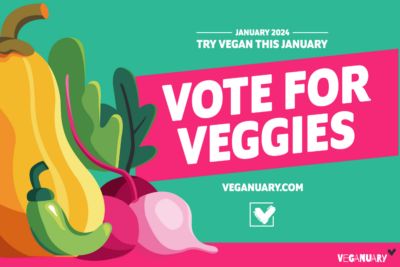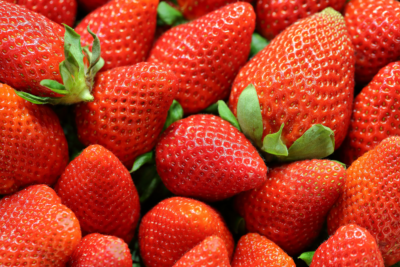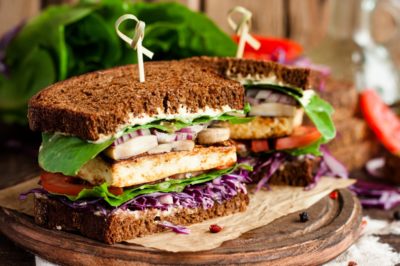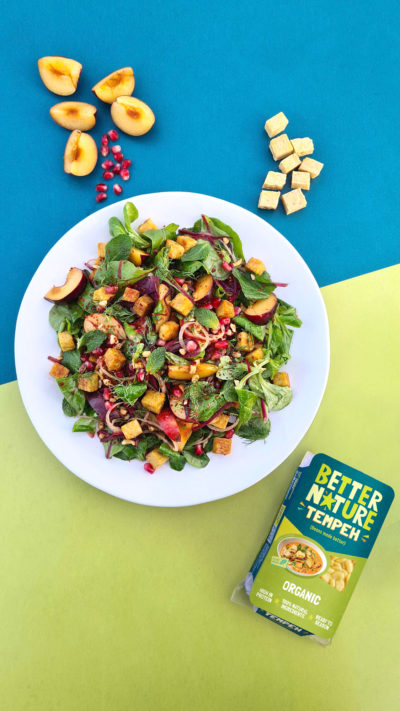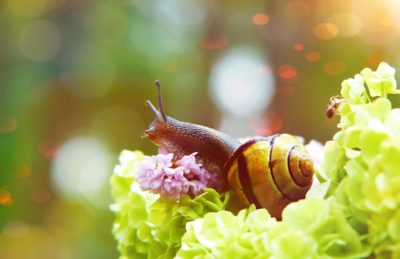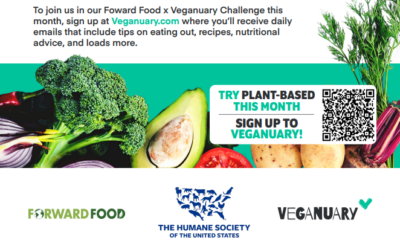Chicken has long been touted as an eco-friendly alternative to beef or pork, but in reality, modern chicken farming has a detrimental impact on the environment. In the US, chicken farming has rapidly industrialized in recent decades to meet the growing demand for cheap meat, and we are now witnessing the severe consequences of this system.
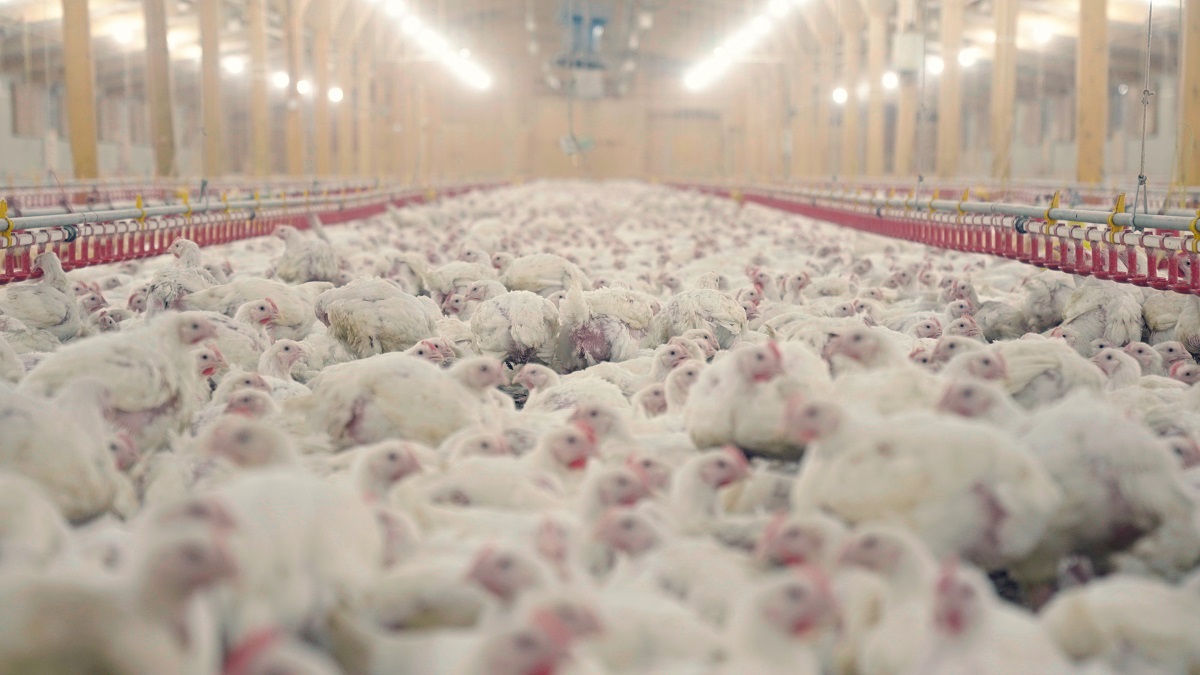
According to EPA Reports, runoff from areas with chicken manure and waste contaminates both surface water and groundwater, which are sources of drinking water. Algae blooms can lead to increased growth of the Pfiesteria piscicida microbe, which sickens both animals and humans when present in drinking water. The nitrogen in chicken manure is quickly converted into nitrate, and consequentially, high levels of nitrate in drinking water causes “blue baby syndrome” (methemoglobinemia) which can be fatal. Not only that, but conventional water treatment does not remove excess nitrate and requires more expensive special treatment.1
Why are so many of the US’s rivers and water sources heading towards ecological collapse and how does chicken and egg farming play a role in their demise?
How does chicken farming cause pollution?
Chickens are the most farmed land animal worldwide and over 8 billion chickens are slaughtered for meat every year in the US alone.2 Large-scale facilities enable fast-growing breeds to be reared in the tens of thousands, an economically efficient system that means farms can meet the high demand for chicken at an affordable price for the consumer.
However, there is a much wider cost to farming animals in this way, a cost that is not reflected on the packaging. We’ve all heard of cow farts causing methane emissions, but chicken poop also harms the environment. Chicken manure contains phosphates, which are important for fertilizing land, but they become dangerous contaminants when they cannot be absorbed by the land and enter rivers and streams at such high levels. Excess phosphates lead to the growth of deadly algal blooms which block sunlight and starve rivers of oxygen, eventually harming other plant life and animal populations such as fish, eels, otters, and birds.
Some intensive facilities house as many as 40,000 chickens in just one shed, and have dozens of sheds on one farm, and the run-off from their waste finds its way into nearby rivers, streams, and groundwater when it is not properly disposed of. Flaws in planning, loopholes in regulations, and lack of enforcement have allowed this pollution to go unchecked for too long.
Pollution of the Pearl river
The ecological devastation caused by chicken and egg farms can be seen in the Pearl River, which flows for 444 miles from Mississippi to Louisiana. The Pearl River Basin is the fourth largest poultry-producing county in the United States and the largest in the state of Mississippi.3 According to EPA’s Toxic Release Inventory (TRI) National Analysis, 4.5 million pounds of toxic chemicals were dumped into the Pearl River in 2019.4 The vast majority of this toxic waste came in the form of nitrates from 3 poultry processing companies: Tyson Foods, Sanderson Farms, and Peco Foods and in the case of the Pearl River, poultry farms were identified as point sources of excess arsenic and nitrates.5
Antibiotics used in poultry production are also widespread in the Pearl River estuary area. Constant and long-term exposure to pharmaceuticals, even in low concentrations, may adversely affect human health. In the short-term, antibiotics can cause allergic reactions like rashes, shortness of breath, and in some extreme cases, anaphylactic shock.6 In fact, a study by Teh and Rigg (1992) reported a case of developing penicillin allergy after consuming chicken meat.7 Another study by Baynes et al. (2016) also indicated the risk of allergic reactions after eating meat containing penicillin antibiotics.8
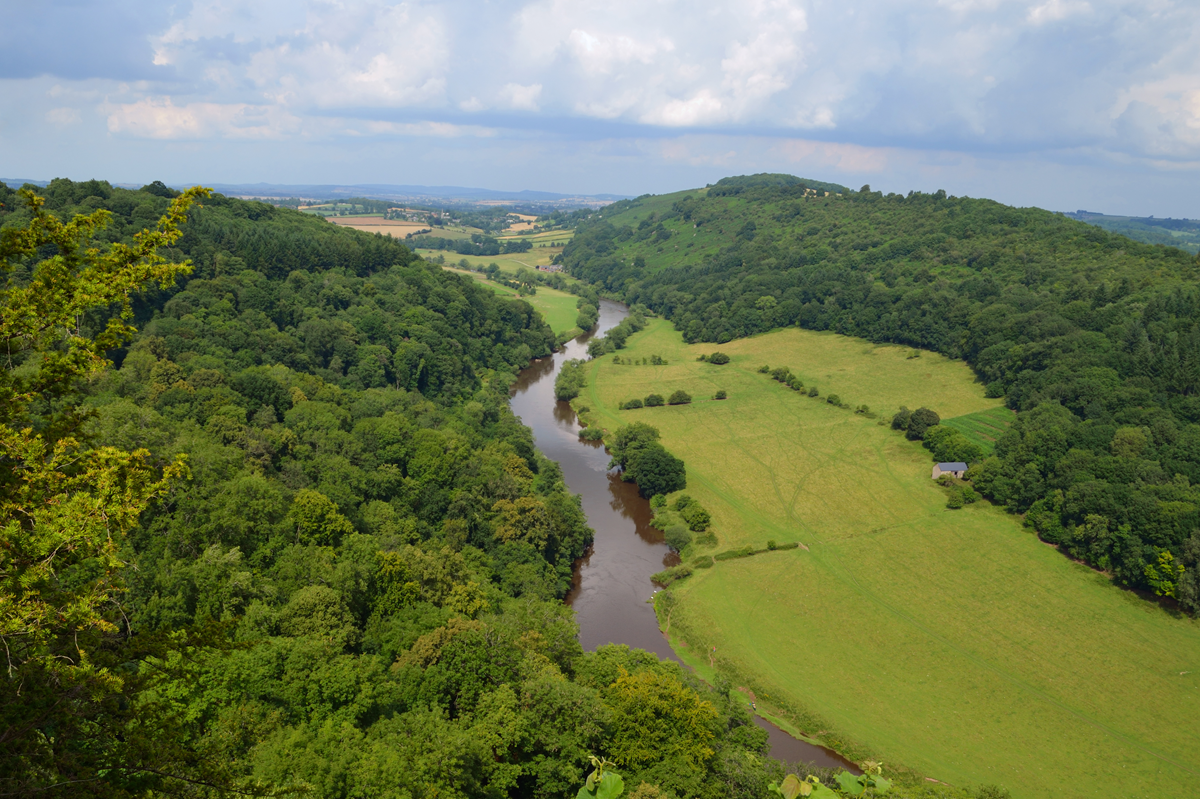
Long-term exposure to antibiotics may have carcinogenic and teratogenic effects; it may also impair fertility and induce antibiotic resistance, which is unfortunately, the greatest threat to human health resulting from the presence of antibiotics in food, according to the World Heath Organization.9 10 Chicken farms are believed to be large emitters of antibiotic-resistant strains. One of the most frequently isolated antibiotic-resistant strains from chicken meat is Salmonella spp.11
The amount of Toxic Release Inventory pollutants entering the Pearl River watershed has increased 47% since 2015 and the Tyson Farms plants in Carthage and Forest, MS – Tyson being the largest supplier of poultry to the United States – contributed over 2.4 million pounds of toxic nitrate compounds into the Pearl River Watershed in 2019. 12
Is it better to eat free-range?
Choosing to eat free-range chicken and eggs isn’t necessarily better for the environment. Free-range egg farms have been directly involved in the destruction of many water supplies because hens farmed for their eggs are still farmed in huge numbers, and the hens defecate directly onto the fields, creating huge amounts of waste.
Research by the Union of Concerned Scientists (UCS) found that Tyson Foods meat and poultry processing plants released more than 371.1 million pounds of pollutants into local waterways across the country between 2018 and 2022.13 Because of the sheer size of Tyson as a megacorporation, companies like these can routinely afford to ignore laws and regulations regarding environmental control and animal welfare. Fines and penalties for their actions are painlessly paid off and seemingly treated as just another cost of the business.
The Union of Concerned Scientists is urging the EPA to impose stricter limitations on wastewater discharges to waterways. The EPA has proposed to amend its effluent regulations that would impose stricter limitations on nitrogen pollution and place limits on phosphorus for the first time. The researchers also advocate for changes to the Farm Bill, which critics say pays the agricultural industry to pollute and allows large corporations such as Tyson to monopolize the industry. 14
So, what is the solution?
Our current intensive farming systems are focused on producing artificially cheap chicken and doing so at the cost of the environment. Even free-range methods are not as environmentally friendly as consumers are led to believe.
Short-term measures include better enforcement of the current regulations and banning new intensive units from opening, but the system of food production as a whole needs to be addressed. A shift away from intensively farming fast-growing breeds is certainly needed, and some campaigners have called for a ‘less but better’ approach – farming slow-growing breeds in lower numbers to produce better quality meat.
However, we believe that there needs to be a societal shift away from eating chicken, eggs, and other animal products altogether to reduce the demand for these foods. In order to combat the climate crisis, a move towards plant-based food systems should be prioritized, with increased support for farmers to transition to sustainable practices. By leaving animals off our plates and opting for plant-based alternatives, we can all start playing our part in making these changes a reality.
For more information and support with moving away from eating chicken and eggs, check out our Choose Chicken-Free campaign.
References:
- Blue, Marie-Luise. “Ecological Impact of Chicken Farming” sciencing.com, https://sciencing.com/ecological-impact-chicken-farming-5005.html. 28 April 2024.
- 2024 U.S. animal kill clock. Animal Clock. (n.d.). https://animalclock.org/
- Mississippi Department of Environmental Quality, Citizen’s Guide to the Water Quality in the Pearly River Basin. Mississippi Department of Environmental Quality. Retrieved April 2024, from https://www.mdeq.ms.gov/.
- Waterkeeper Alliance. (2022, February 21). What’s in our water. Pearl Riverkeeper. https://www.pearlriverkeeper.com/blog/whats-in-our-water9394600
- Goran Gržinić, Agnieszka Piotrowicz-Cieślak, Agnieszka Klimkowicz-Pawlas, Rafał L. Górny, Anna Ławniczek-Wałczyk, Lidia Piechowicz, Ewa Olkowska, Marta Potrykus, Maciej Tankiewicz, Magdalena Krupka, Grzegorz Siebielec, Lidia Wolska, Intensive poultry farming: A review of the impact on the environment and human health, Science of The Total Environment, Volume 858, Part 3, 2023, 160014, ISSN 0048-9697, https://doi.org/10.1016/j.scitotenv.2022.160014.
- R. Kyuchukova Antibiotic residues and human health hazard – review Bulgarian J. Agric. Sci., 26 (2020), pp. 664-668
- W.L. Teh, A.S. Rigg, Possible penicillin allergy after eating chicken, The Lancet, Volume 339, Issue 8793, 1992, Page 620, ISSN 0140-6736
- Ronald E. Baynes, Keith Dedonder, Lindsey Kissell, Danielle Mzyk, Tara Marmulak, Geof Smith, Lisa Tell, Ronette Gehring, Jennifer Davis, Jim E. Riviere, Health concerns and management of select veterinary drug residues, Food and Chemical Toxicology, Volume 88, 2016, Pages 112-122, ISSN 0278-6915, https://doi.org/10.1016/j.fct.2015.12.020.
- Kyuchukova, Ralica. “Antibiotic residues and human health hazard-review.” Bulgarian Journal of Agricultural Science 26.3 (2020).
- World Health Organization. “Fact Sheets: Antimicrobial Resistance. 2021.” (2021).
- Gelband, H., Miller, Petrie, M., Pant, S., Gandra, S., Levinson, J., Barter, D., … & Laxminarayan, R. (2015). The state of the world’s antibiotics 2015. Wound healing southern africa, 8(2), 30-34.
- United States, EPA. 2019 EPA Toxic Release Inventory National Analysis , Environmental Protection Agency, 2019.
- “Tyson Foods Meat Processing Plants Released Millions of Pounds of Pollutants in Local Waterways, According to New Analysis.” Edited by Kyle Ann Sebastian, Union of Concerned Scientists, 29 Apr. 2024, www.ucsusa.org/about/news/tyson-plans-release-pollutants-local-waterways#:~:text=Tyson%20Foods%20meat%20and%20poultry,of%20Concerned%20Scientists%20(UCS).
- Read, Zoë. “Tyson Foods Chicken Plants Pollutes Waterways with Millions of Pounds of Pollutants, Report Says.” WHYY, WHYY, 30 Apr. 2024, www.whyy.org/articles/tyson-chicken-pollution-waterways-nitrogen-phosphorus/.


